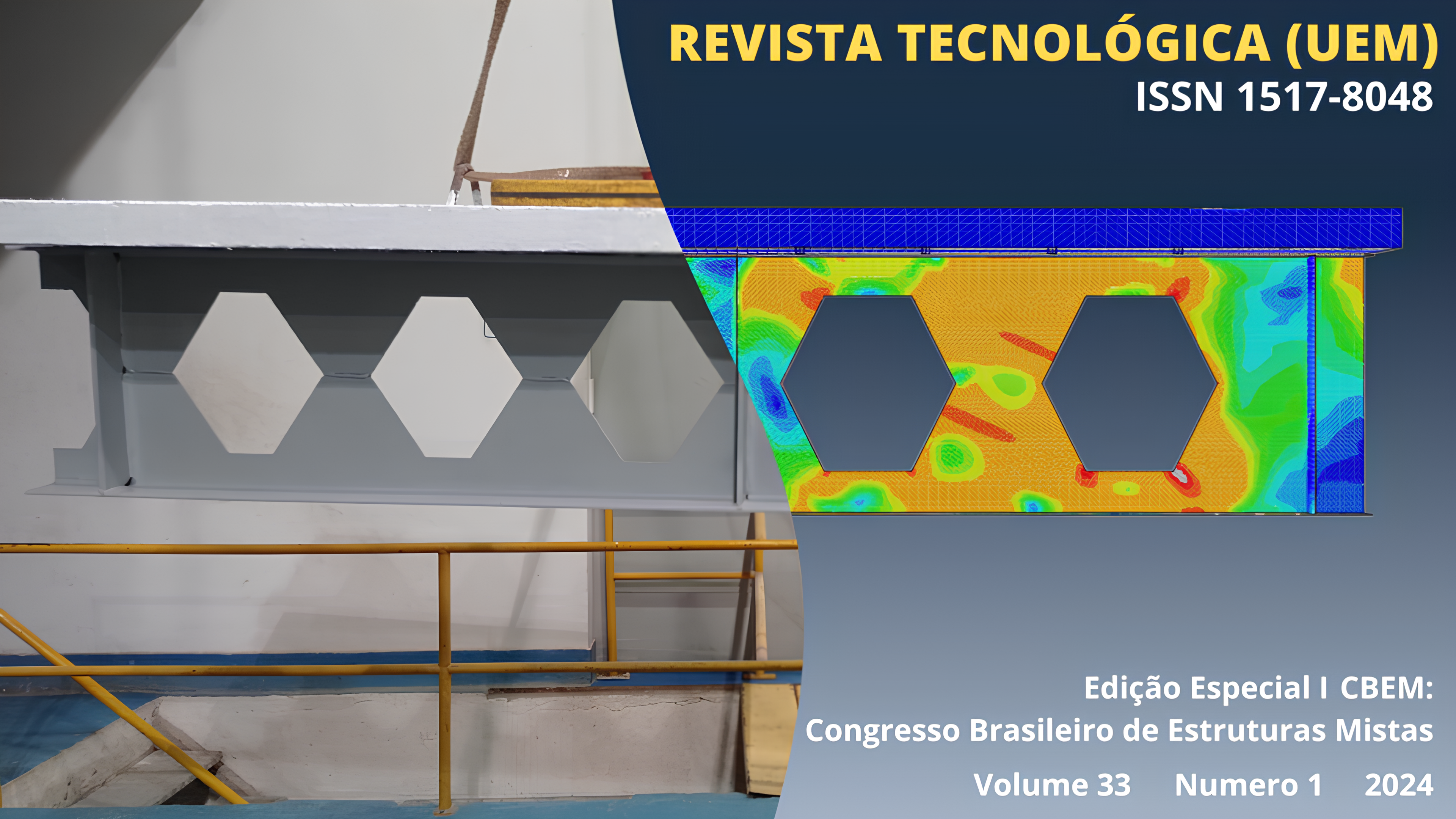EFFECTS OF LOADING ON CONCRETE QUALITY THROUGH ULTRASOUND TESTING
Abstract
Considering the importance of non-destructive testing in inspecting existing structures, this study aims to analyze the effects of external loading on the quality of concrete using the ultrasonic pulse velocity (UPV) test. To this end, a multidirectional UPV measurement is proposed on concrete samples under compressive stresses, considering their porosity and anisotropy. Twenty cylindrical specimens measuring 10 × 20 cm (diameter × height) were made from low-strength concrete (< 20 MPa). Compressive strength (fc), tensile strength (fct), porosity (P), and UPV were then measured in the direction of the height of the specimen and also radially, under increasing compressive stresses in this case. Scanning electron microscopy (SEM) was also carried out. The results (UPV = 3716.20 m/s) made it possible to classify the quality of the low-strength concrete (fc = 17.48 MPa, fct = 1.65 MPa) as "good", which is attributed, among other things, to its high porosity (P = 6.73%) and quantity of macropores, confirmed via SEM. However, under increasing compressive loads, the curve fitting the data (R2 = 79.42%) revealed a reduction in the UPV in the radial direction, significantly reducing the quality of the concrete.
Downloads
References
ASSOCIAÇÃO BRASILEIRA DE NORMAS TÉCNICAS. NBR 5738: Concreto - Procedimento para moldagem e cura de corpos de prova. Rio de Janeiro, 2015.
ASSOCIAÇÃO BRASILEIRA DE NORMAS TÉCNICAS. NBR 5739: Concreto - Ensaio de compressão de corpos de prova cilíndricos. Rio de Janeiro, 2018b.
ASSOCIAÇÃO BRASILEIRA DE NORMAS TÉCNICAS. NBR 7222: Concreto e argamassa - Determinação da resistência à tração por compressão diametral de corpos de prova cilíndricos. Rio de Janeiro, 2011.
ASSOCIAÇÃO BRASILEIRA DE NORMAS TÉCNICAS. NBR 8802: Concreto endurecido – Determinação da velocidade de propagação de onda ultrassônica. Rio de Janeiro, 2019.
ASSOCIAÇÃO BRASILEIRA DE NORMAS TÉCNICAS. NBR NM 248: Agregados – Determinação da composição granulométrica. Rio de Janeiro , 2003.
ASSOCIAÇÃO BRASILEIRA DE NORMAS TÉCNICAS. NBR NM 52: Agregado miúdo - Determinação de massa específica e massa específica aparente. Rio de Janeiro, 2002.
BREYSSE, D. et al. How to combine several non-destructive techniques for a better assessment of concrete structures. Cement and Concrete Research, v. 38, p. 783-793, 2008.
BROŽOVSKÝ, J. (2016). Ultrasonic Pulse Method - Influence of Internal Compressive Stress on Results of Testing Calcium Silicate Bricks. Key Engineering Materials, v. 722, p. 260-266, 2016.
INTERNATIONAL ATOMIC ENERGY AGENCY (IAEA). Guidebook on non-destructive testing of concrete structures. Industrial Applications and Chemistry Section, 2002.
LORENZI FILHO, A. et al. Monitoramento de Estruturas de Concreto através de Ensaios de Velocidade de Propagação do Pulso Ultra-sônico. 51º Congressso Brasileiro do Concreto, Instituto Brasileiro do Concreto, Curitiba (Brasil), 2009.
RABBANI, A.; JAMSHIDI, S.; SALEHI, S. An automated simple algorithm for realistic pore network extraction from micro-tomography images. Journal of Petroleum Science and Engineering, v. 123, p. 164-171, 2014.
RASHID, K.; WAQAS, R. Compressive strength evaluation by non-destructive techniques: An automated approach in construction industry. Journal of Building Engineering, v. 12, p. 147-154, 2017.
SURSHETWAR, V. et al. Effect of Compressive Stress on Ultrasonic Pulse Velocity. International Journal of Engineering Research and Technology, v. 9, p. 1055-1061, 2020.
Os autores podem manter os direitos autorais pelo seu trabalho, mas repassam direitos de primeira publicação à revista. A revista poderá usar o trabalho para fins não-comerciais, incluindo direito de enviar o trabalho em bases de dados de Acesso Livre.










